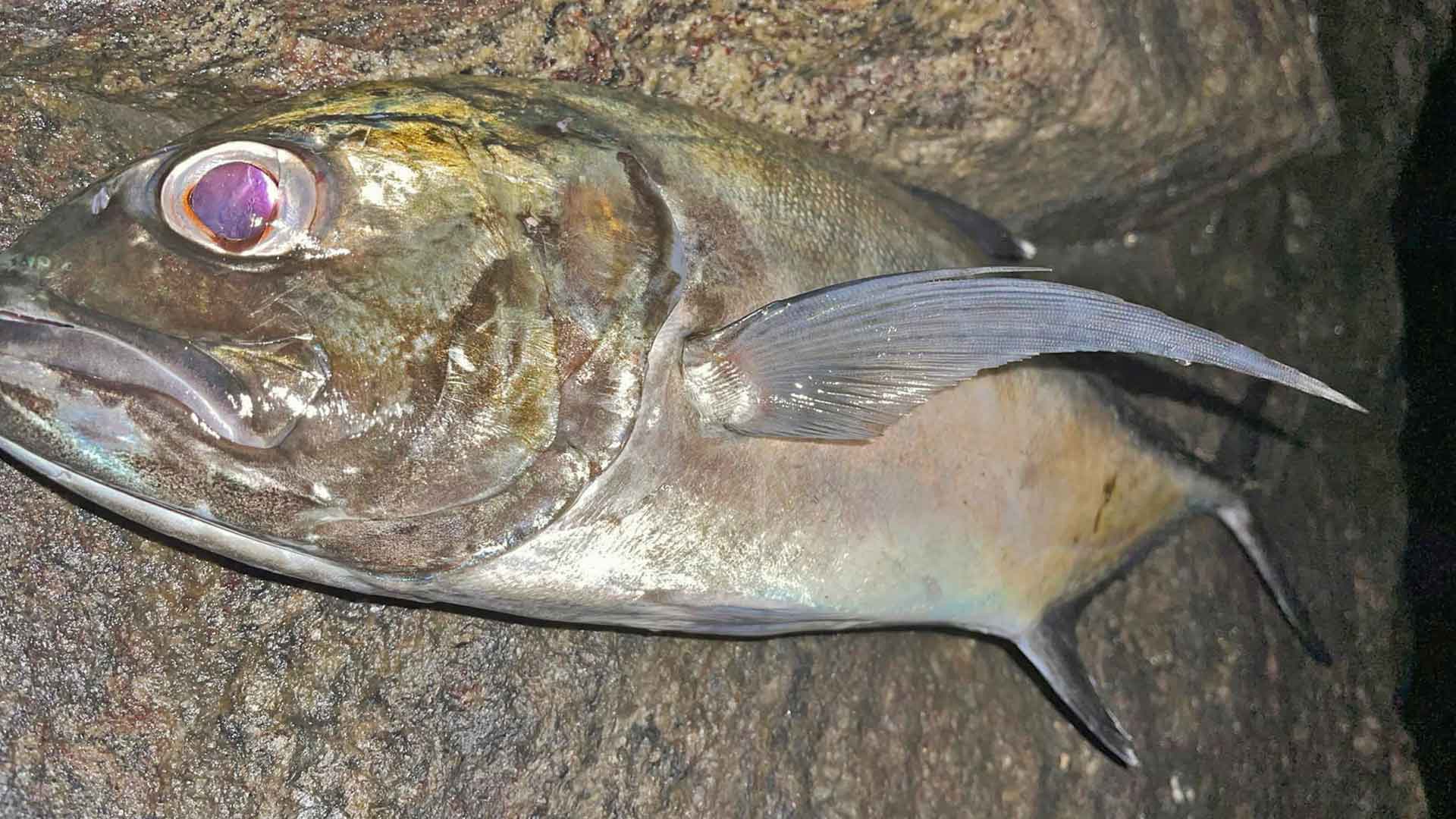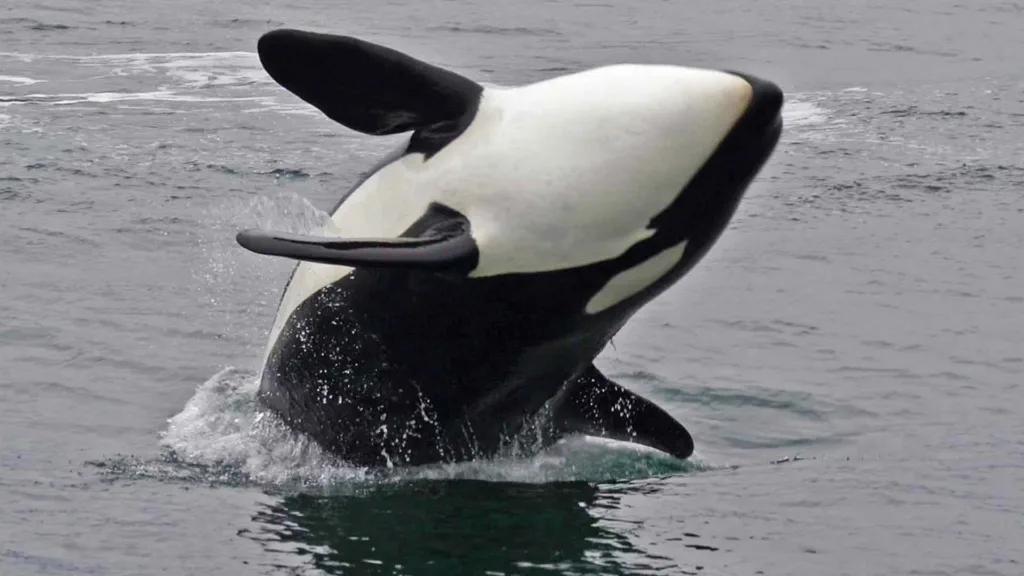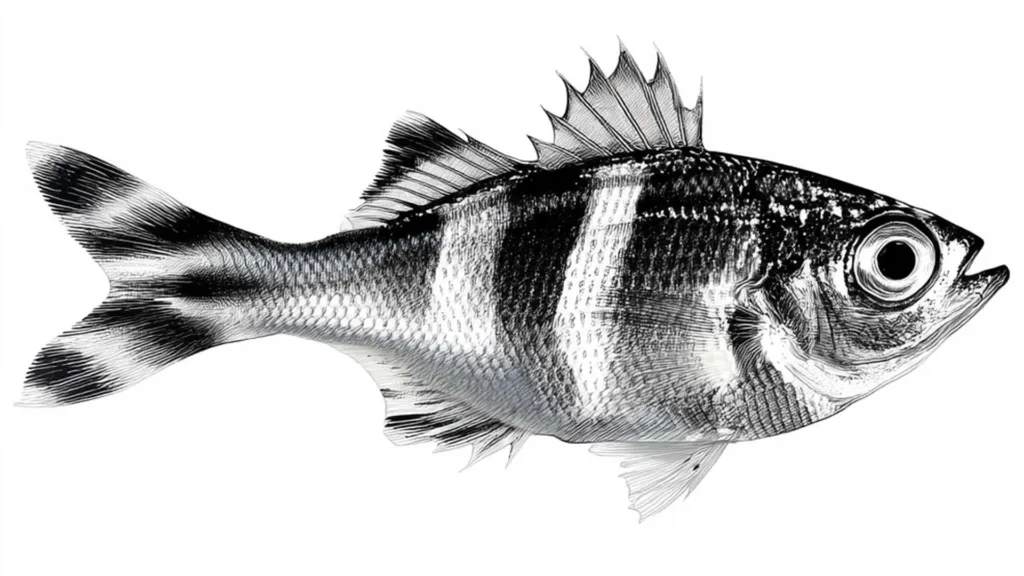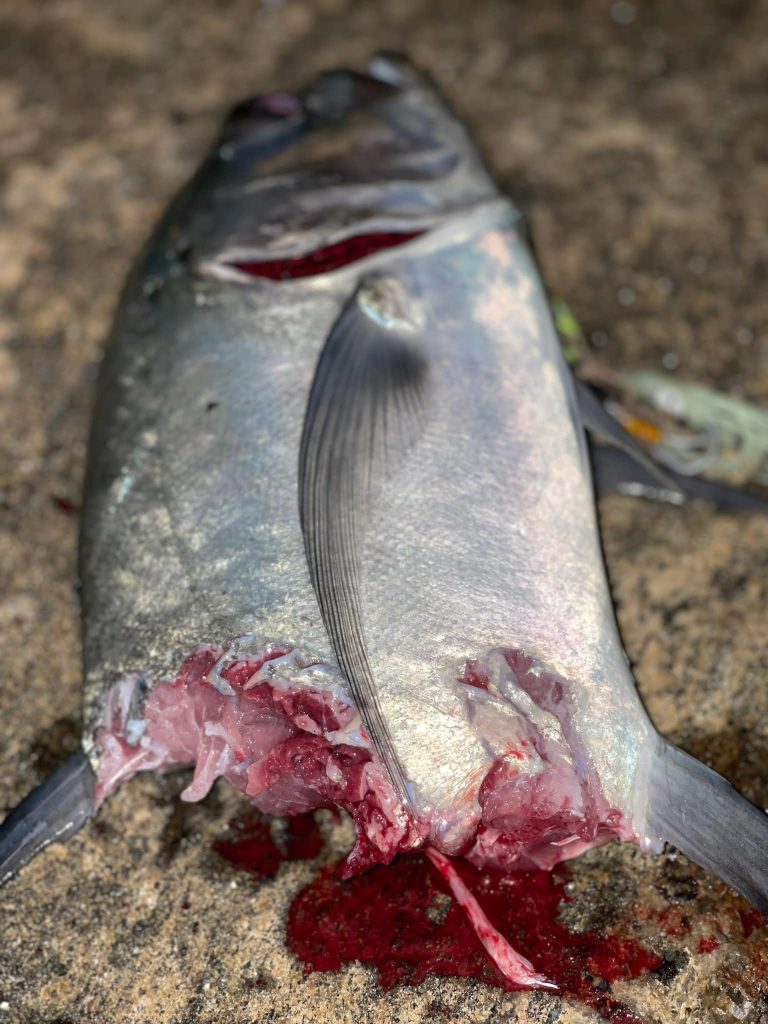
Bigeye trevally has a distinct large eye, pointed snout, and curved head. This fish normally lives in warm waters, inhabiting rocky shorelines and drop-offs. They are often seen in large schools. They are inshore and offshore. They normally live inshore. Juveniles are found close to the shore.
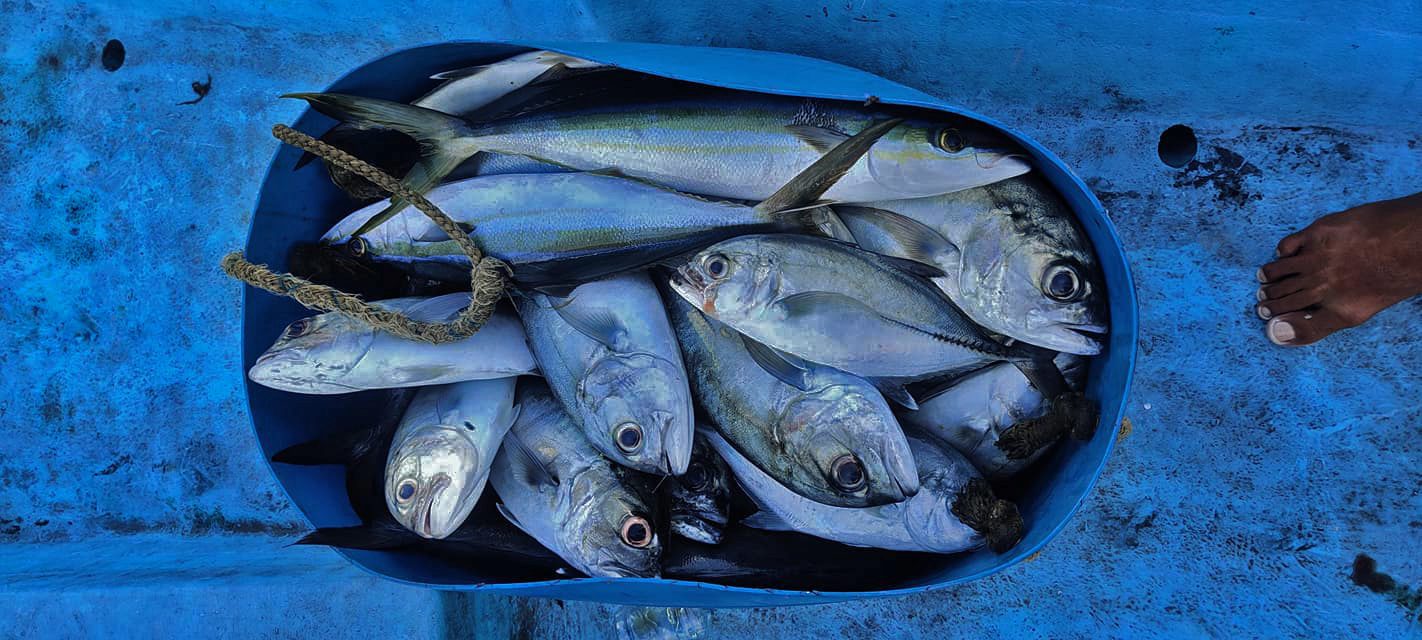
Bigeye trevally is an important species in the marine ecosystem. They can grow up to three feet. They strike on most lures. Their big eyes help them hunt in low light conditions. I have caught many of these bigeye trevallies at the southern end of the capital Male’.
I normally use 60 to 100-gram luminous metal jigs. But I thought to explore some new tricks to land this fish. And I asked my friend Naseeh (@gaxidbeoulve) to make some special lures to entice this fascinating fish. I told him to prepare some small squid skirt lures (fluorescent green) that glow at night. These lures are attached with assist hooks, and then they are attached to the metal jig.
After casting the rod, I let the lure sink to the bottom and then pull it quickly, with horizontal quick flicks that I exert on the rod and allow pauses. Sometimes they strike the bait at shallow depths. Once they are hooked, the scream of the drag is observed. This is one of the hardest fighting fish. But on many occasions I have lost the trophy to the sharks.
We found this combination of lures very effective. We use 5000 to 8000 reel series with braid size of 2.0 to 3.5 or monofilament line of between 30lb to 60lb. This fish is mainly caught at night. We also catch this fish using handline fishing during night fishing or bottom fishing. We use cut baits and let the bait drift or sink. Traditional handline fishing is a simple way to catch fish. Line, wait, hook, and bait are used. But we normally don’s use weight to catch bigeye trevally although I used to attach a weight (sinker) and let the bait reach the bottom quickly.
I do it secretly as my friend Niyaz would shout at me. He says there is no need to use sinkers as this fish will strike at relatively close to the surface of water. Actually, he is right. But I use the sinker if the current is strong and I want to land more bigeye trevallies as many as possible.
This is one of the most fascinating schooling species. During the daytime, they are seen in large moving schools. But at night the school splits and they are found in groups as they cruise the waters for hunting. Their synchronizing patterns while schooling are mesmerizing. Although they move slowly in large groups, these are fast swimmers. Their quick movements are captivating to watch.
